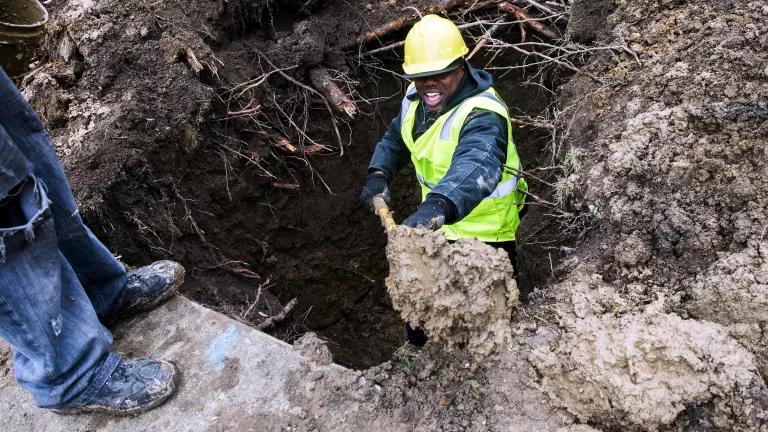Michigan Sets New Bar in National Fight Against Lead-Poisoned Drinking Water

The EPA should follow suit.
The State of Michigan took a significant step today to ensure safer drinking water by instituting protections that will eventually remove all lead service lines, the pipes that carry drinking water to homes. Because lead-contaminated water poses serious health risks, lead service lines have been behind several high-profile water-safety crises, including the one in Flint, Michigan.
With the new Lead and Copper Rule, not only is Michigan becoming the first state to require full lead service line replacement, but it is also the first state to ban partial service line replacement (which can increase neurotoxic contamination in homes) and require the water utility to replace and pay for the entire lead service line.
“These new protections can never make up for the disaster in Flint. And while they don’t solve the whole problem,” says Cyndi Roper, a Michigan senior policy advocate at NRDC, “they help ensure that other communities are better protected moving forward. Getting lead services lines out of the ground is the most effective way to reduce the potential for dangerous water contamination.”
Exposure to lead can lead to significant and irreversible damage to children’s developing brains and nervous systems. It has also been linked to miscarriages, fertility issues, cardiovascular and kidney problems, cognitive dysfunction, and elevated blood pressure. Experts agree there is no safe level of lead exposure.
“Neighboring states, many of which have their own lead issues, need to look closely at what is happening in the Great Lakes State,” says Erik Olson, senior director of NRDC’s Health and Food program and a coauthor of a 2016 NRDC report that found that more than 18 million people in the United States were being served by community water systems with lead violations. “They need to update their own safe drinking water protections to keep up.”
Although there is room for improvement, Michigan’s new rule raises the bar higher than in any other state and could also serve as a guide for a federal overhaul of the now-dated Lead and Copper Rule. “Despite some troubling loopholes,” Roper says, “these rules set an example other states and the U.S. Environmental Protection Agency could follow to address an issue plaguing water systems across the country.”


